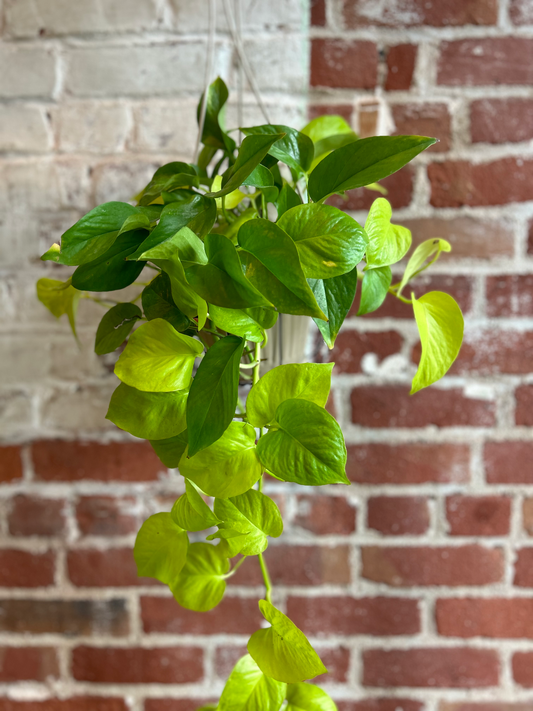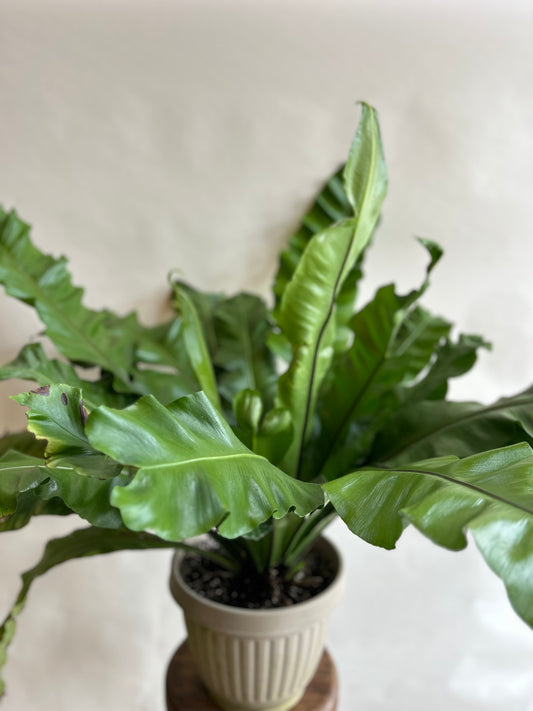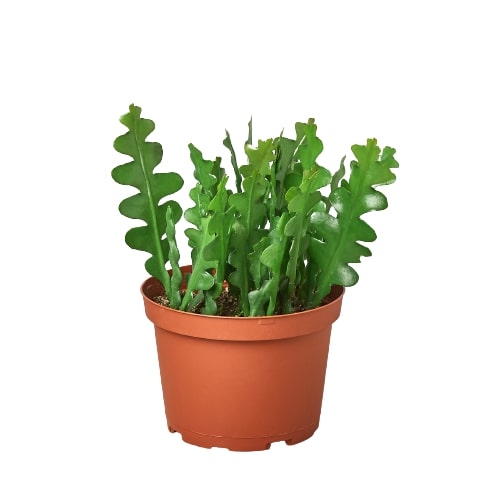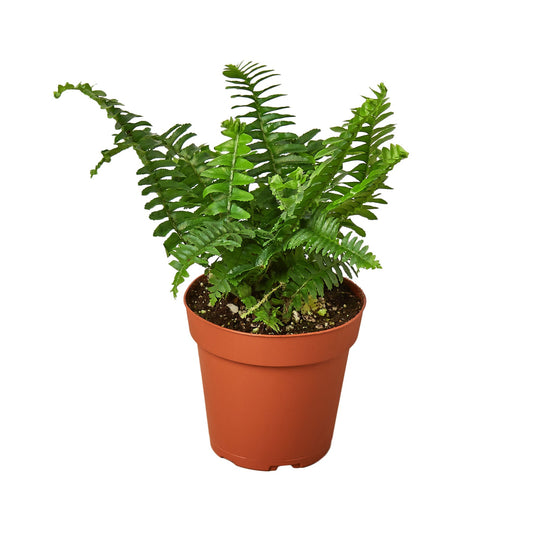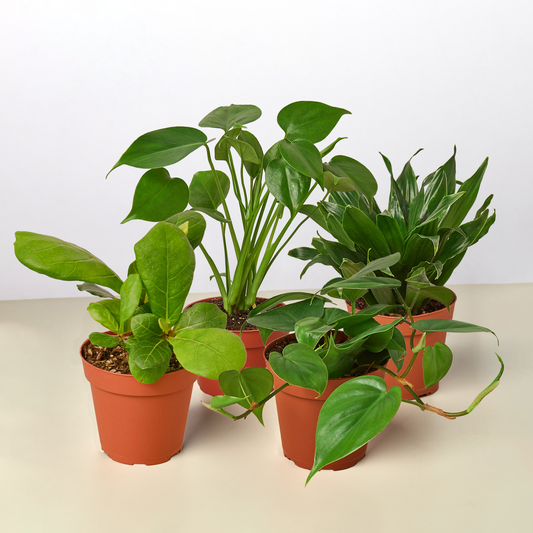What To Do With Your Pothos Node
Cafe Planta Team
Have you ever found yourself marveling at the lush beauty of a pothos plant and wondered what magic lies in those little nodes? These tiny powerhouses can transform into a whole new plant with just a bit of care. Whether you're a seasoned plant parent or just getting started on your green journey, understanding what to do with your pothos node can open up a world of possibilities for your indoor garden.
In this article, we'll explore various ways you can make the most of these nodes. From propagation tips to creative interior design ideas, we’ll cover everything you need to know to turn your pothos nodes into thriving plants that add life and beauty to your home.
What Exactly is a Pothos Node?
Before we get into all the fantastic things you can do with a pothos node, let's first understand what it is. A node is a small bump on the stem of the pothos plant where leaves and roots grow. It's the birthplace of new growth and a vital part of the plant's anatomy.
When you look closely at your pothos vine, you'll notice these nodes appear at intervals along the stem. They are the plant's way of reaching out and expanding its leafy empire. Each node has the potential to sprout roots, which is why they're so important for propagation.
For the plant lovers out there, it's fascinating to see how a simple node can lead to a whole new plant. It's like finding a hidden treasure in your own home! With a little care and attention, these nodes can help you grow your pothos collection and even share the love by gifting new plants to friends and family.
Getting Started with Pothos Propagation
Now that we know what a pothos node is, let's talk about propagation. Propagation is the process of creating new plants from existing ones, and it's easier than you might think. With pothos, all you need is a few nodes and some basic supplies.
Here’s how you can get started:
- Identify healthy nodes: Look for nodes that are plump and have healthy leaves. Avoid any that appear dry or damaged.
- Make the cut: Using clean scissors or a knife, cut a segment of the vine that includes at least one node and a leaf. Aim for a section that’s about 4-6 inches long.
- Prepare for rooting: Remove the leaf closest to the node to expose it for rooting. This will be the spot where roots begin to form.
- Choose your medium: You can root your pothos in water or soil. Both methods work well, so choose what feels most comfortable for you.
Once you've got your cuttings ready, it’s time to watch the magic happen. With a bit of patience and the right conditions, you'll soon see roots emerging from those nodes, turning your cuttings into new plants.
Rooting in Water: A Simple Method
If you’re new to propagation, water rooting is a great place to start. It's simple, and you can easily monitor the progress of your cuttings. Plus, there’s something mesmerizing about watching roots develop in a clear glass of water.
To root your pothos in water, follow these steps:
- Fill a glass or jar with water: Make sure the water level covers the nodes but doesn't submerge the leaves.
- Place the cuttings in the water: Arrange them so the nodes are submerged, and the leaves are above the waterline.
- Find a bright spot: Place the jar in a location with indirect sunlight. Too much direct sunlight can be harsh and may damage the cuttings.
- Change the water regularly: Fresh water is crucial for healthy root growth. Change it every week to keep bacteria at bay.
In a few weeks, you’ll notice roots forming. Once they’re about an inch long, your cuttings are ready to be transferred to soil. This is where your new plant will really start to thrive.
Rooting in Soil: A More Natural Approach
While water rooting is fun and visually satisfying, some people prefer to root their pothos directly in soil. This method mimics the plant's natural growing conditions and can lead to stronger, more resilient roots.
Here's how to do it:
- Choose a small pot: A pot with drainage holes is ideal to prevent waterlogging.
- Fill with potting mix: Use a well-draining potting mix that retains some moisture but allows excess water to escape.
- Plant the cuttings: Make a small hole in the soil and gently place the cutting in, ensuring that the node is well-covered.
- Water lightly: Moisten the soil without soaking it. Too much water can lead to rot, so less is more at this stage.
Place your pot in a warm, bright spot, and keep the soil slightly moist. With time and care, your cutting will establish roots and begin to grow.
Creating Indoor Plant Displays with Pothos
Once you have a thriving pothos plant, the sky's the limit in terms of creative displays. These plants are incredibly versatile and can adapt to various indoor environments, making them perfect for any home decor style.
Here are some fun ways to incorporate pothos into your space:
- Hanging baskets: Pothos vines look stunning when draped from hanging baskets. Their cascading leaves create a natural, flowing look that adds elegance to any room.
- Bookshelf accents: Let your pothos trail over the edge of a bookshelf or cabinet for a touch of greenery that softens the lines of your furniture.
- Tabletop centerpieces: Use smaller pots of pothos as living centerpieces on dining or coffee tables. They bring a lively energy to the room and can be easily moved around as needed.
- Wall-mounted planters: Create a vertical garden by mounting planters on the wall. This is a great option for small spaces where floor space is limited.
These ideas are just the beginning. With a bit of imagination, you can transform your home into a green oasis using pothos plants.
Caring for Your Pothos Plant
Once your pothos cuttings have taken root and are thriving, it's important to care for them properly to ensure they continue to grow and flourish. Fortunately, pothos are known for being low-maintenance, making them perfect for both new plant parents and experienced gardeners alike.
Here are some tips for keeping your pothos happy:
- Light: Pothos plants thrive in bright, indirect light. However, they can also tolerate low-light conditions, making them versatile for different parts of your home.
- Watering: Allow the soil to dry out between waterings. Overwatering can lead to root rot, so it's better to err on the side of caution.
- Temperature: Pothos prefer temperatures between 65-85°F (18-29°C). Keep them away from cold drafts or sudden temperature changes.
- Humidity: While pothos can tolerate low humidity, they thrive in a bit more moisture in the air. Mist the leaves occasionally or place a humidifier nearby if your home is particularly dry.
By following these simple guidelines, your pothos plants will reward you with lush, vibrant growth.
Dealing with Common Pothos Problems
Even the best plant parents encounter issues from time to time. The good news is that pothos plants are resilient and can bounce back from most problems with a little attention.
Here are some common pothos problems and how to address them:
- Yellowing leaves: This could be a sign of overwatering. Check the soil moisture and adjust your watering schedule accordingly.
- Brown leaf tips: Often caused by low humidity or underwatering. Increase humidity levels and ensure the plant is getting enough water.
- Leggy growth: If the plant is stretching and becoming sparse, it may need more light. Move it to a brighter location.
- Pest infestations: Common pests include spider mites and mealybugs. Wipe leaves with a damp cloth or use insecticidal soap to keep these pests at bay.
With a bit of patience and care, you can tackle these issues and help your pothos thrive once more.
Sharing the Pothos Love
One of the joys of growing pothos is the ability to share them with others. Once you've mastered propagation, you can gift new plants to friends, family, or even neighbors. It's a wonderful way to spread greenery and brighten someone's day.
Consider these ideas for sharing your pothos:
- Plant swaps: Host or participate in a local plant swap where you can exchange cuttings with other plant lovers.
- Gifts: Pot up a propagated cutting in a cute container and give it as a thoughtful gift for birthdays, housewarmings, or just because.
- Community projects: Donate extra plants to schools, community centers, or offices looking to add some greenery to their spaces.
By sharing your pothos, you're not only giving a plant but also a piece of joy and tranquility that comes with having greenery around.
Creative Uses for Pothos Nodes Beyond Propagation
While propagation is the most common use for pothos nodes, there are other creative ways to incorporate them into your home. They can become part of art projects, educational tools, or even a unique decor element.
Here are some inventive ideas:
- Botanical art: Use the nodes to create botanical prints or pressed plant art. These can make beautiful, personalized pieces for your home or as gifts.
- Science experiments: Introduce children to plant biology by using nodes to teach about plant growth and root development in a fun, hands-on way.
- Decorative displays: Arrange nodes in terrariums or glass jars for a minimalist, modern look. They can act as conversation pieces and add a hint of nature to any room.
These creative uses can add another layer of enjoyment to your pothos journey, making your home a more vibrant and interesting place.
Final Thoughts
Pothos nodes are more than just small bumps on a vine; they're the start of something beautiful. By understanding and utilizing these nodes, you can expand your plant collection, enhance your home decor, and even share the love with others. From propagation to creative uses, the possibilities are endless with these incredible plants.
At Cafe Planta, we believe in the power of plants to connect us with nature and each other. If you have any questions about your houseplants or want to explore more options, don't hesitate to email us or reach out on Instagram. Whether you're a seasoned plant parent or just starting your journey, we're here to help you create a lush, thriving plant collection in your home.


